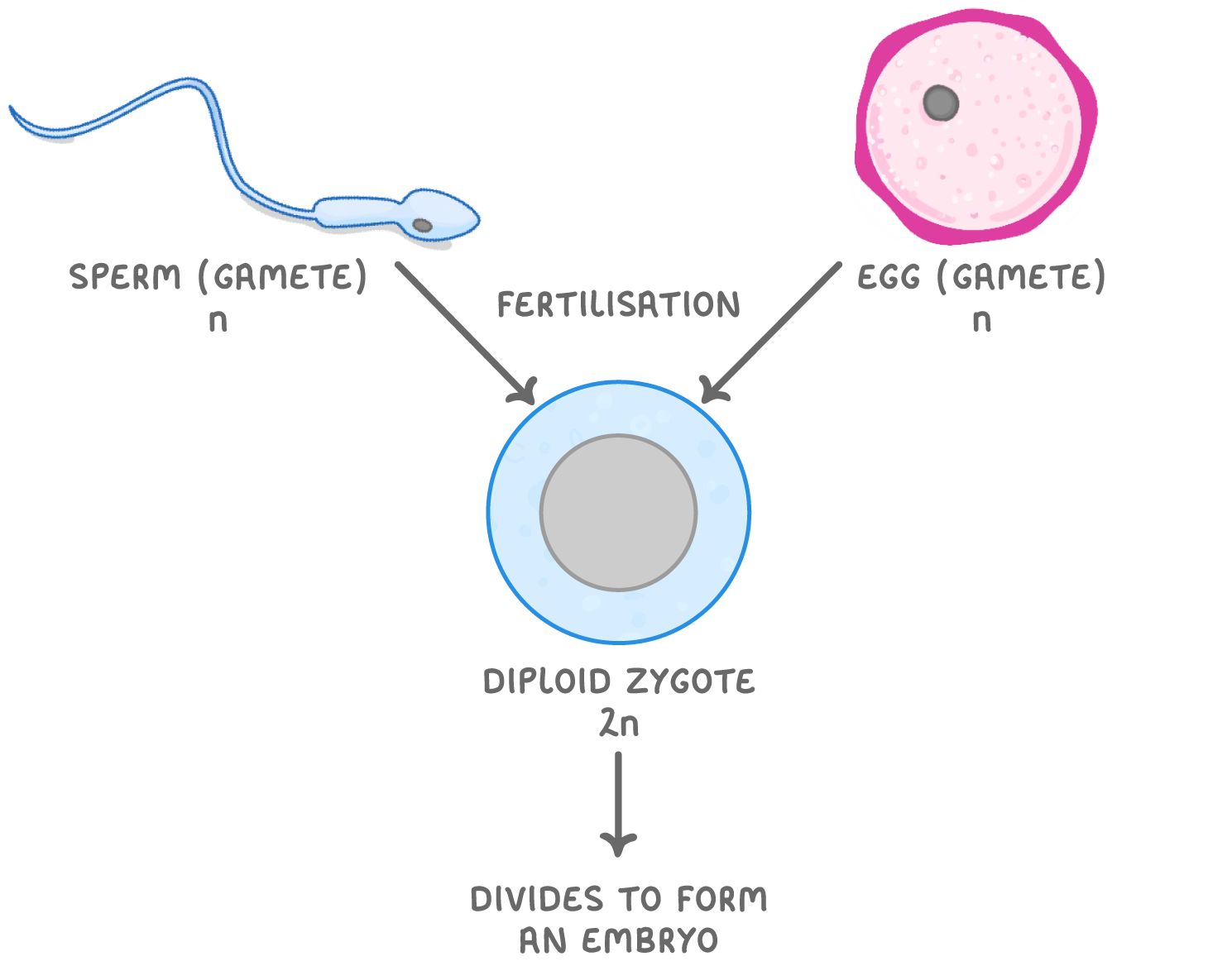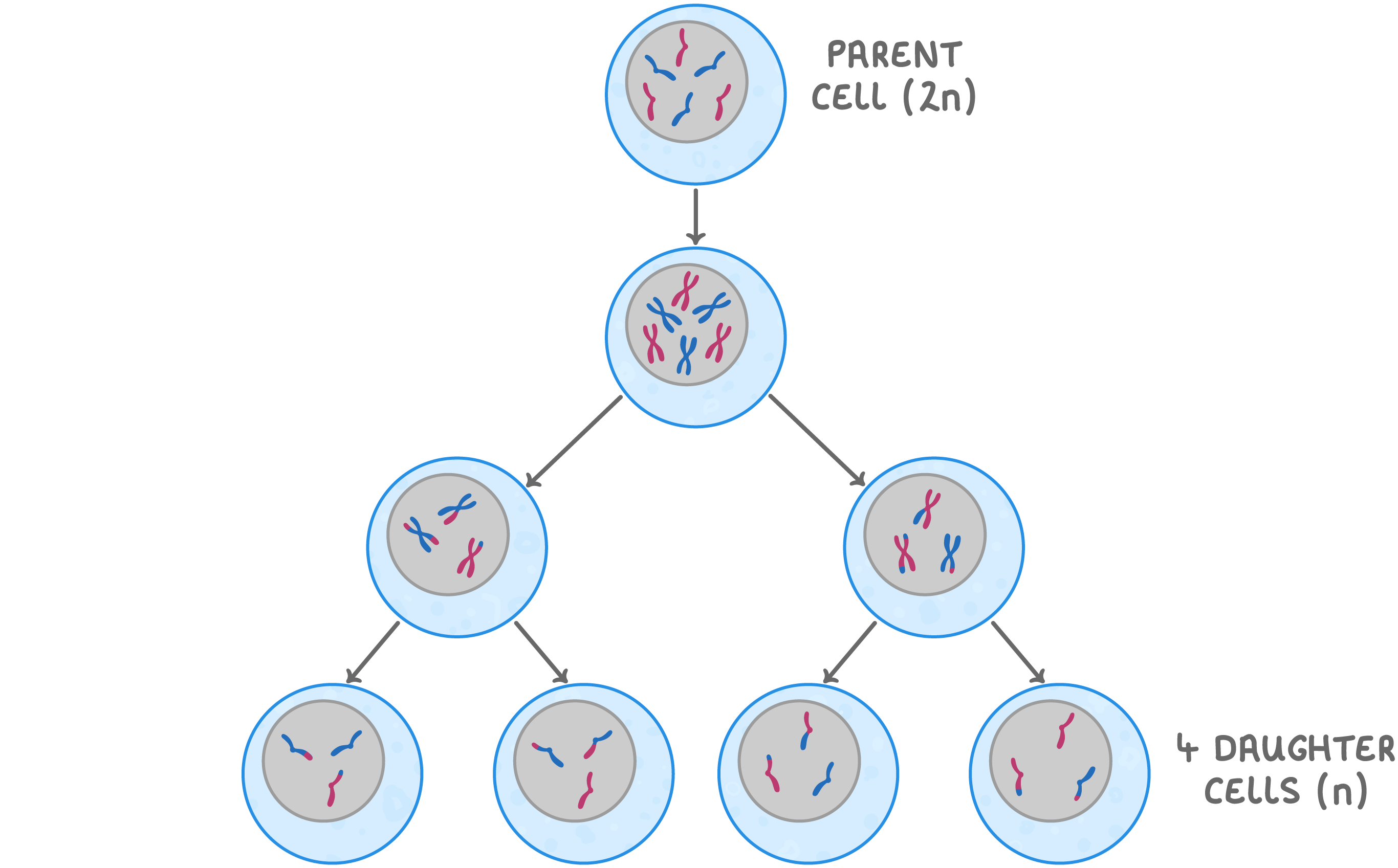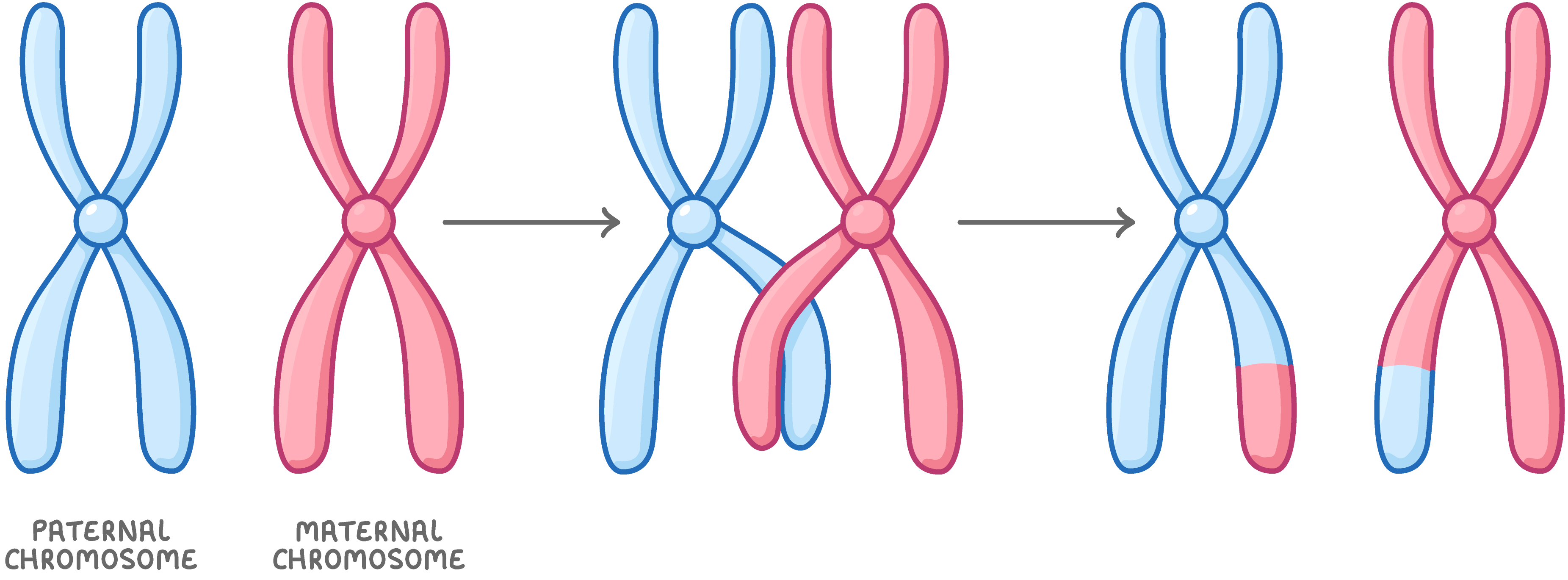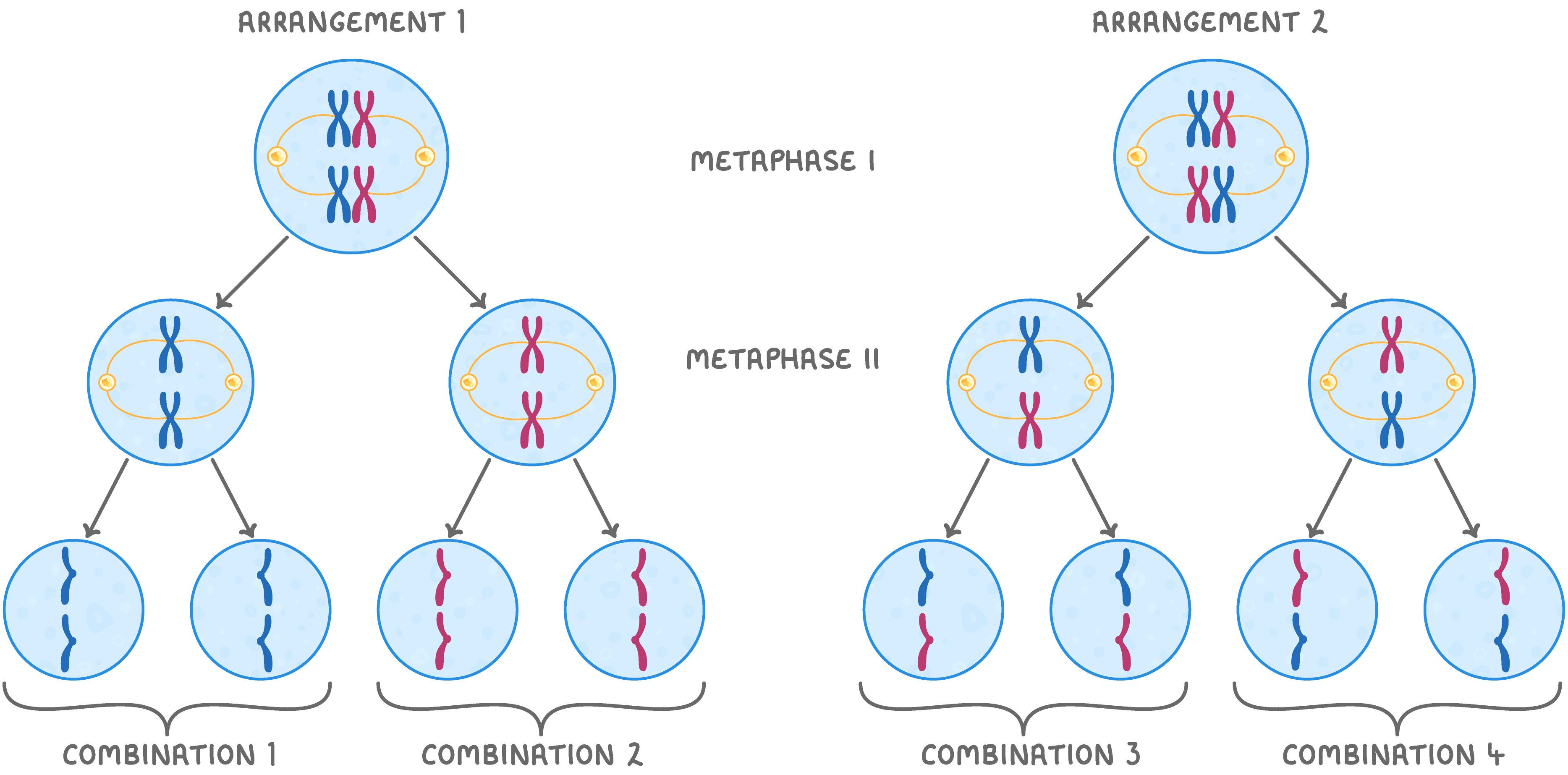Importance of Meiosis
This lesson covers:
- The importance of meiosis in living organisms
- The processes of crossing over and independent segregation (or random assortment)
- How crossing over and independent segregation (or random assortment) cause variation
Importance of meiosis Meiosis is a type of cell division that produces four genetically different haploid cells. This type of cell division serves two important roles:
The random fusion of gametes during fertilisation also leads to genetic variation. |
Sexual reproduction Meiosis is needed to produce haploid gamete cells containing only half the number of chromosomes as a body cell. In sexual reproduction two gametes (sex cells) fuse together to form a zygote.  |
As each gamete contains half the normal number of chromosomes (n), the resulting zygote cell contains the diploid number of chromosomes (2n). Half of these chromosomes are from the father's sperm cell and half are from the mother's egg cell |
Genetic variation Meiosis is needed to produce cells which are genetically different from one another.  |
Two events within meiosis lead to genetic variation (these will be covered in more detail later in the lesson):
|
Crossing over Crossing over (or recombination) occurs during prophase I of meiosis.  |
Steps of crossing over:
This swaps alleles between the homologous chromosomes to produce different combinations on each chromosome. In the diagram below, you can see that the process of crossing over produces four genetically different daughter cells.  Each cell has a different chromatid (and a different set of alleles), increasing the genetic variation of the offspring. |
Independent segregation (random assortment) During metaphase I, pairs of homologous chromosomes line up along the cell's equator. However, whether the paternal or maternal chromosomes appears on the left or right is completely random. As a result, which chromosomes end up in each daughter cell is also random. This principle is known as independent segregation or random assortment. To understand the principle of independent segregation, it is best to look at two chromosome arrangements. The diagram below shows the possible arrangements of two pairs of homologous chromosomes.  |
Looking at the diagram above, we can see that arrangement 1 and arrangement 2 produce daughter cells with four different combinations of chromosomes. Human cells contain 23 pairs of homologous chromosomes and so independent segregation produces a huge number of different chromosome combinations. Gametes with different chromosome combinations increase genetic variation of offspring. |
Calculating genetic variation due to independent segregation It's important to understand how to calculate the number of genetically distinct gametes produced as a result of independent segregation. To calculate this, we use the formula 2n where 'n' represents the number of chromosome pairs. For example, humans have 23 chromosome pairs so there are 223, or 8,388,608, potential chromosome combinations that could result from independent segregation alone. |
You may also need to calculate the number of genetically different zygotes that are possible from two parents. The formula for this is (2n)2. This is essentially the same formula as before, but squared to account for the combination of two gametes. For humans, the equation would be (223)2, meaning there are a possible 7 x 1013 genetically different zygotes. |